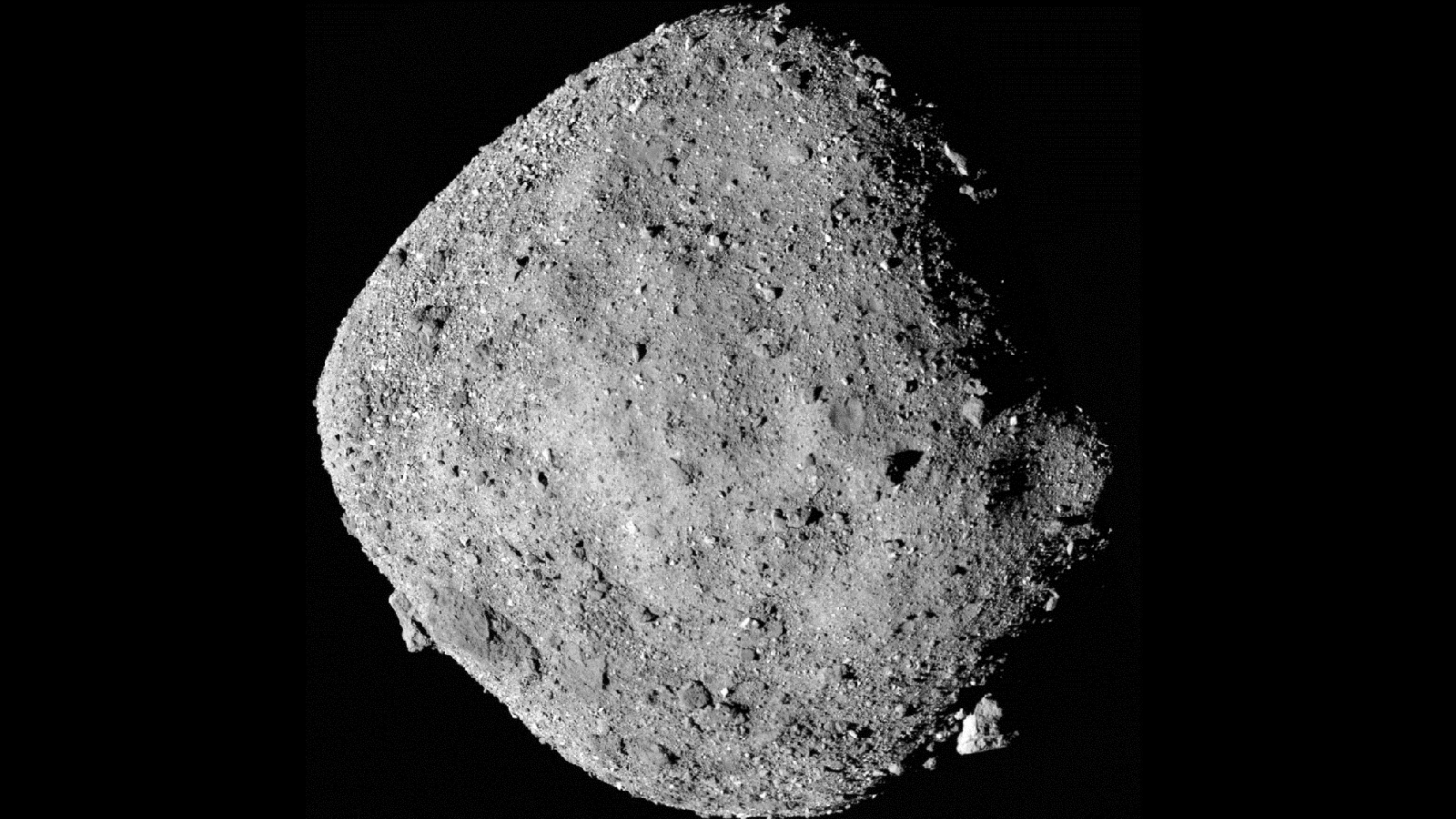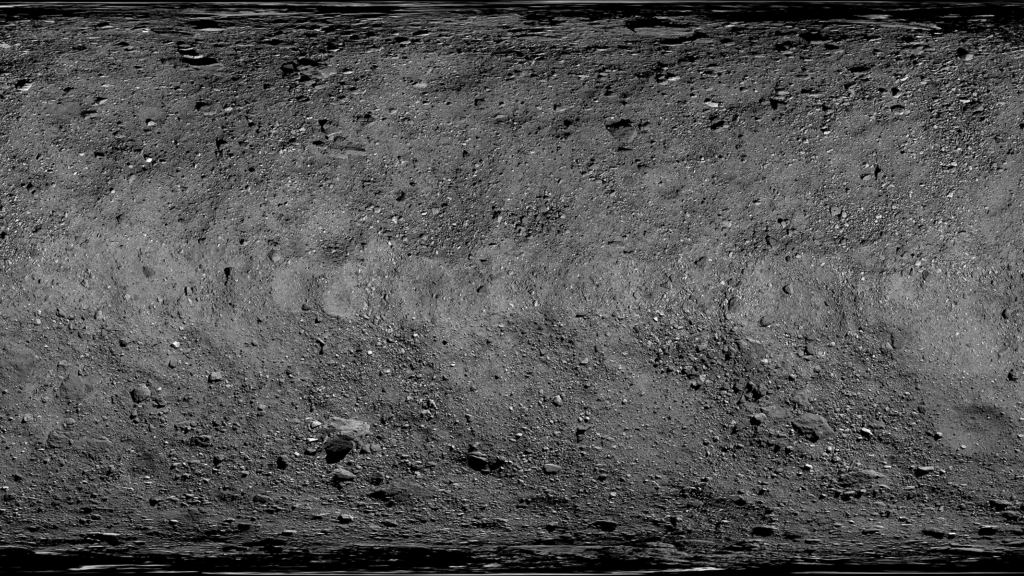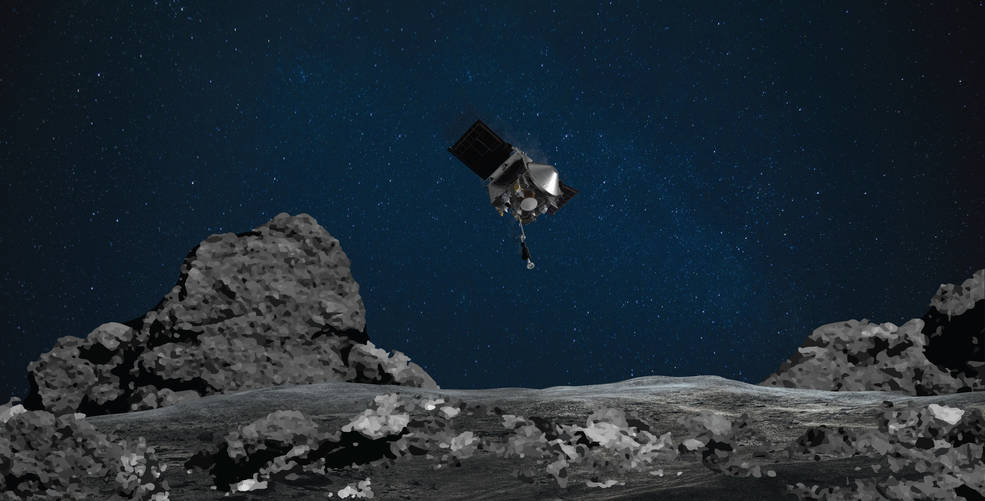As soon as the OSIRIS-REx spacecraft arrived at asteroid Bennu in December 2018, there was a big surprise. Scientists expected Bennu's surface would consist of fine-grained material like a sandy beach. But take a look at that surface: Bennu is a jumbled mess.
Here's a closer view:
And amazingly, amid that mess, pieces of Bennu's surface are being ejected out into space. The cameras on board OSIRIS-REx (short for Origins, Spectral Interpretation, Resource Identification, and Security-Regolith Explorer) spotted rock particles being repeatedly launched into space. Now, after more than a year and a half up close with Bennu, planetary scientists are starting to understand why the dynamic shedding of small pieces of rock are taking place.
One answer is that meteoroids -- small space rocks -- are hitting the surface of Bennu, and causing small particles from the surface to be ejected. But also, the particle sizes match what is expected for thermal fracturing, as the asteroid's surface is repeatedly heated and cooled while it rotates, (see a more detailed article about the fracturing here). Scientists think the ejection events might come from both processes.
"We thought that Bennu's boulder-covered surface was the wild card discovery at the asteroid, but these particle events definitely surprised us," said Dante Lauretta, the OSIRIS-REx principal investigator and a professor at the University of Arizona. "We've spent the last year investigating Bennu's active surface, and it's provided us with a remarkable opportunity to expand our knowledge of how active asteroids behave."
Previous article: Why Are Particles Getting Ejected Off Asteroid Bennu?
Lauretta and his team have seen that on average, only one or two particles are ejected per day. But because they are being "launched" in a very low-gravity environment, most are moving slowly. Lauretta said these particles pose little threat to OSIRIS-REx, which will attempt to briefly touch down on the asteroid on Oct. 20 to scoop up surface material, which may even include particles that were ejected before dropping back to the surface.
Bennu is about one third of a mile (565 meters) wide at its equator
This discovery was detailed in a new study that was part of a collection of papers published in a special edition of the Journal of Geophysical Research: Planets.
Senior research scientist Steve Chesley at NASA's Jet Propulsion Laboratory was the lead author on the ejection event paper, and he and his team found that most of these pebble-size pieces of rock, typically measuring around a quarter-inch (7 millimeters), were pulled back to Bennu under the asteroid's weak gravity after a short hop, sometimes even ricocheting back into space after colliding with the surface. Others took longer to return to the surface, remaining in orbit for a few days and up to 16 revolutions. And some were ejected with enough power to completely escape from the vicinity of Bennu. The scientists are still making observations of these ejection events to better understand what is taking place.
If the sample collection goes as planned, the spacecraft will return to Earth in September 2023 with a cache of Bennu's material for scientists to study further.
Source: JPL
 Universe Today
Universe Today



